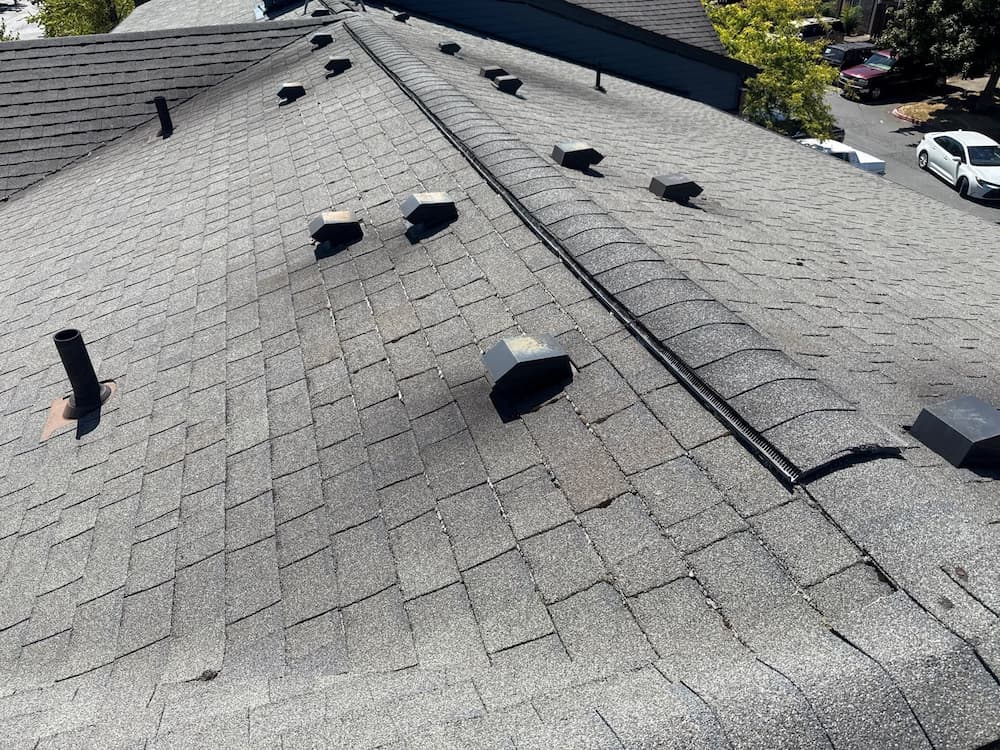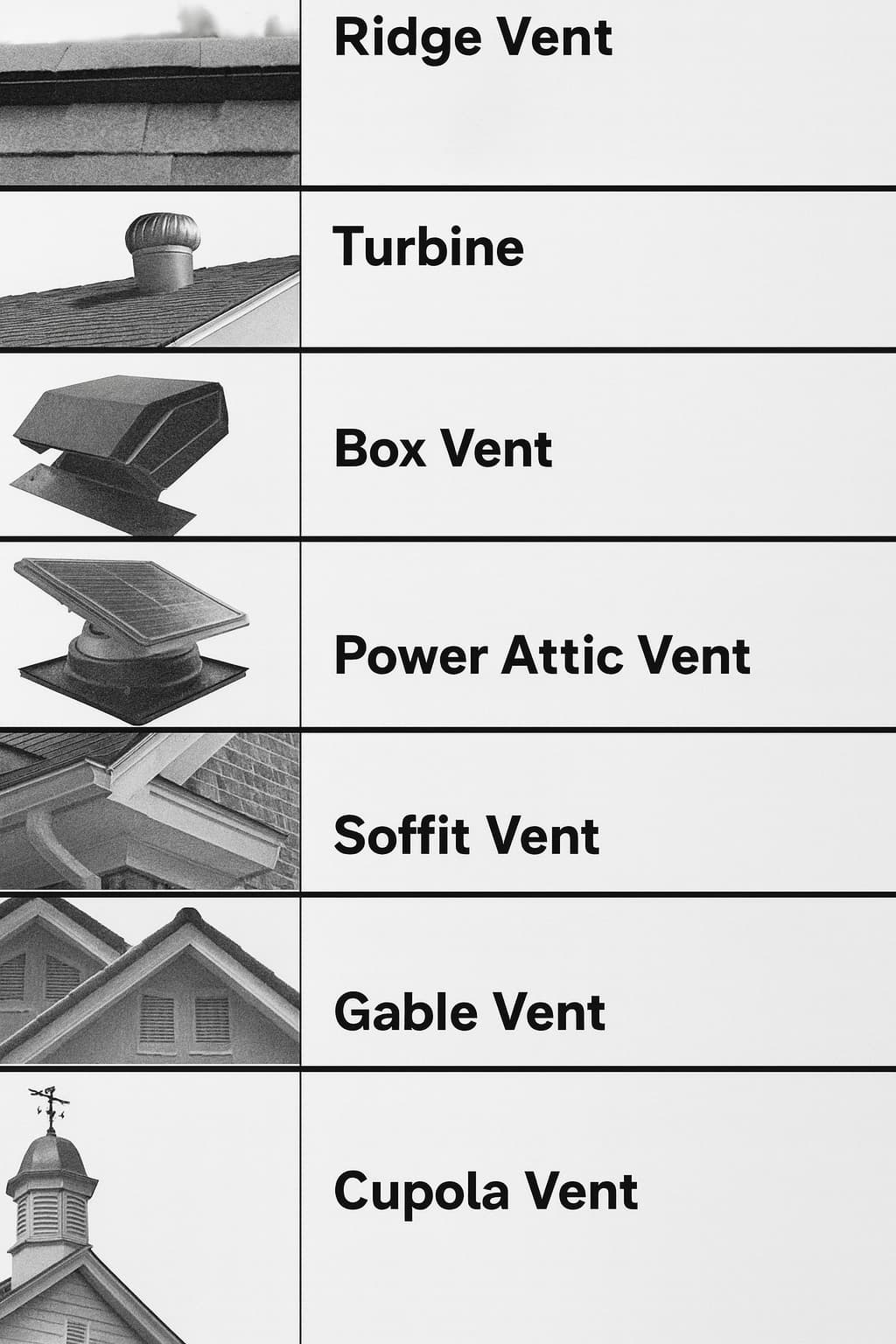Roof vents allow air to flow through the attic, regulating heat and moisture, which prevents damage, improves energy efficiency, and extends the life of the roof. Choosing the right type ensures comfort, lower costs, and a longer-lasting roofing system

Roof vents are mechanical or passive components installed in roofs to support effective ventilation for residential or commercial buildings. These structures allow fresh air to flow into enclosed spaces while expelling hot, stale, or moist air, promoting better air circulation. Proper ventilation is essential for maintaining energy efficiency, preventing moisture buildup, and improving indoor air quality.
Roof vents come in various types, designs, and sizes to accommodate different roof structures, regional climates, and building needs. Common types include ridge vents, soffit vents, turbine vents, and box vents. The choice of vents depends on the roofing system and specific ventilation requirements.
Roof vents play a crucial role in maintaining a safe, energy-efficient, and durable roofing system. By allowing air to circulate through the attic space, they help regulate temperature, preventing heat buildup during hot months and moisture accumulation during colder seasons. Proper venting also reduces strain on heating and cooling systems, improving energy efficiency and lowering utility costs.
Roof vents prevent damage caused by trapped moisture, such as mold growth, rot, and weakened structural components. Additionally, they help protect roofing materials like shingles from premature wear due to extreme heat. Effective ventilation contributes to a longer lifespan for the entire roof structure, ensuring both comfort and safety indoors.
Roof vents serve critical roles in maintaining the health of a building's interior and exterior. Their primary function is to allow airflow into attic spaces, regulating heat and moisture levels. Proper ventilation helps prevent mold, mildew, and rot caused by excess moisture accumulating beneath the roof. Roof vents improve energy efficiency by reducing the strain on HVAC systems, as they help stabilize indoor temperatures throughout the year. Additionally, they minimize ice dam formation in colder climates by maintaining a steady roof temperature. Effective roof ventilation protects the structure, prolonging the lifespan of roofing materials and enhancing property value over time.
Roof vents come in various designs, each serving specific ventilation needs. These include:

Ridge vents run along the peak of a roof, blending seamlessly with its design. They exhaust warm, humid air naturally, using convection. Ridge vents are effective for entire attic ventilation.
Turbine vents, or whirlybirds, rely on the wind to rotate. The spinning action pulls heat and moisture out of the attic, offering energy-efficient ventilation.
Mounted on gable ends, these vents expel hot air horizontally. They are commonly combined with intake vents for balanced airflow.
Static vents, like box vents, allow air to escape without mechanical parts. Positioned near the roof’s ridge, they offer passive ventilation.
Powered vents use electricity or solar energy to actively remove air from the attic. These are ideal for larger spaces requiring consistent airflow.
Located beneath the eaves, soffit vents enable fresh air intake, ensuring efficient air circulation when paired with exhaust vents. These vents protect against moisture buildup and mold.
Roof vents differ in function, design, and installation method. Here are the key distinctions:
Choosing the right type depends on ventilation goals, roof design, and climate conditions.
Selecting the appropriate roof vent requires careful consideration of several factors. Homeowners should analyze their climate, attic size, and specific ventilation needs.
Consulting with a roofing contractor ensures compatibility and proper installation tailored to your home’s needs.
Proper installation and maintenance of roof vents ensure their efficiency and longevity. During installation, it is essential to select a location that promotes optimal air circulation while keeping the vents protected from water intrusion. Using quality materials, such as weather-resistant flashing and sealants, prevents leaks and damage. Hiring professionals for installation can minimize installation errors and improve performance.
Maintenance involves routine inspections to check for blockages, leaks, or wear and tear. Cleaning the vents periodically removes debris such as leaves or dirt. Replacing damaged parts promptly prevents larger problems. By maintaining proper airflow and addressing issues early, roof vents remain effective and durable.
Proper ventilation plays a crucial role in extending the lifespan of a roof and avoiding early roof replacement services. By regulating temperature and moisture levels within the attic space, roof vents help prevent common issues such as mold growth, wood rot, and ice dam formation. Persistent moisture buildup, if unchecked, can undermine the structural integrity of roofing materials over time. Roof vents also contribute to energy efficiency, reducing dependence on HVAC systems during extreme weather conditions. Selecting the right type of vent tailored to the roof's design and local climate is essential for optimal performance. Maintenance, including regular inspections and roof cleaning, ensures vents function effectively year-round.
We earn trust by delivering a consistently great experience. Clients return year after year, confident they’ll receive the same high-quality service.
Our skilled crews provide workmanship that impresses and holds up over time.
We offer fair, competitive pricing so customers can enjoy top-tier service without stretching their budget.